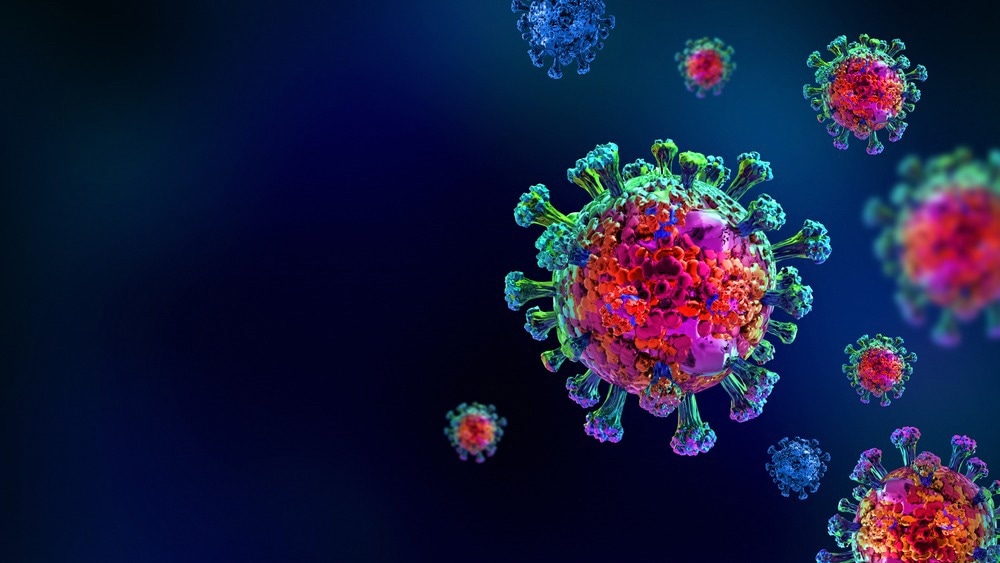In a recent study published Nature, researchers assessed naïve B cells and autoreactivity in severe coronavirus disease 2019 (COVID-19).
 Study: Dysregulated naïve B cells and de novo autoreactivity in severe COVID-19. Image Credit: stockklemedia/Shutterstock
Study: Dysregulated naïve B cells and de novo autoreactivity in severe COVID-19. Image Credit: stockklemedia/Shutterstock
Background
From the beginning of the COVID-19 pandemic, severe acute respiratory syndrome coronavirus 2 (SARS-CoV-2) infection has been linked to highly inflammatory immune activation. These reactions have more recently been associated with forming self-reactive antibodies with pathogenic potential, while their causes and treatments are yet unknown. Extrafollicular B cell activation, a process related to the production of fresh autoreactive antibodies in chronic autoimmunity, has previously been recognized as a key characteristic of severe or critical COVID-19.
About the study
In the present study, researchers studied the expansion of a naive derived immunoglobulin G1 (IgG1) population of antibody-secreting cells (ASCs) with low mutation in severe COVID-19.
Retrospective analysis of 25 patients was performed utilizing an in vitro technique that enhanced the culture supernatant's antibody production from peripheral blood mononuclear cells (PBMC)-purified ASCs. Six of ten recruited ICU (intensive care unit) patients without dexamethasone treatment, four patients with moderate illness, and three demographically matched healthy donors were chosen for single cell VDJ (variability, diversity, and joining) (scVDJ) repertoire analysis to investigate the characteristics of the ASC compartment in these patients. At acute infection periods between four and 18 days after the beginning of symptoms, more than 17,000 ASCs were sequenced.
To determine whether COVID-19 responses were associated with autoreactivity, plasma samples from 27 ICU patients (ICU-C), 18 outpatients (OUT-C), 20 systemic lupus erythematosus (SLE) patients and 14 healthy donors (HD) were tested for autoreactivity related to connective tissue disorders using more than 30 clinically relevant autoantigens.
Results
An essential step in the naive-derived extrafollicular (EF) B cell response pathway, the development of double‐negative (DN)-2 B cells, was directly linked with the expansion of ASC in the ICU-C cohort. In contrast to non-specific cellular growth, ICU-C patients showed increased frequencies of blood ASC-secreting IgG RBD-specific antibodies, demonstrating the importance of early circulating ASCs to the antiviral response. In fact, throughout the COVID-19 cohorts, the overall IgG-switched RBD-targeted MENSA titers were positively linked with ASC growth.
According to isotype analysis, the ICU-C cohort consistently had more IgG1 than IgA, which was dominant in steady-state HD. Clonal connection between IgM and IgG1 ASCs in the ICU-C group and concurrent IgM+ expansions noted in a few patients revealed that the IgG1 compartment potentially represented the newly formed Ag-specific ASC pool.
Relative to OUT-C and HD controls, the enlarged IgG1+ ASC compartment of ICU-C patients was differentiated by a lower mutation frequency. Notably, the IgG1 compartment exhibited the highest levels of mutation reduction, with 10% to 70% of all IgG1 ASC that expressed VH germline sequences. Overall mutation frequencies reduced significantly compared to those in the remaining class-switched ASC compartment.
Comparing the ICU-C cohort to other class-switched compartments, examining the selective pressure on the antibody complementarity determining regions showed a selective decrease in IgG1. Increased inclusion of autoreactivity-prone IgHV4-34 clonotypes CD27+ B cell-cell compartments in SLE, which frequently results from naive-derived EF B cell responses, was a sign of lower selective pressure. The ICU-C cohort's repertoire also showed a similar tendency, with more IGHV4-34 positive cells frequently appearing, especially in the IgG1+ ASC compartment.
Breaks of broad tolerance against a number of targets, including phospholipids, rheumatoid factor, glomerular basement membrane, and nuclear antigens, were discovered across the ICU-C cohort. Most ICU patients had at least one positive test, and some had positive tests for as many as seven different autoantigens. ICU-C patients had much higher concentrations of autoreactivity, with three or more autoreactivities being observed solely in ICU-C patients.
Anti-nuclear antigen (ANA) and anti-carbamylated protein reactions were two autoreactivities significantly detected by autoreactivity screening. On the other hand, the ICU-C cohort showed ANA reactivities at viral titers more than 1:160 in nearly 40% of the participants. Over 40% of patients in the ICU-C sample had anti-carp antibodies, which are linked to tissue destruction in rheumatoid arthritis and SLE. Notably, the overall number of tolerance breakdowns across the sample was directly associated with a-CarP titers. Although the B cell activation profiles were similar, all tests for Sm/RNP, Ro, La, and dsDNA, which are linked to SLE, were negative.
Conclusion
The study findings showed that the low selection compartment had a high frequency of SARS-CoV-2 and autoantigen-specific clonotypes, including pathogenic autoantibodies against the glomerular basement membrane. The study further showed that the present pathway contracts during recovery while tolerance standards are restored and acute-derived ASCs lost.